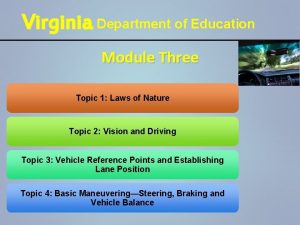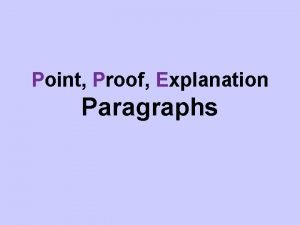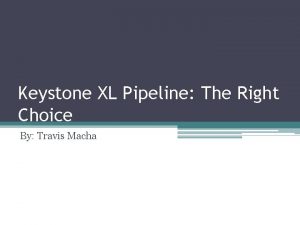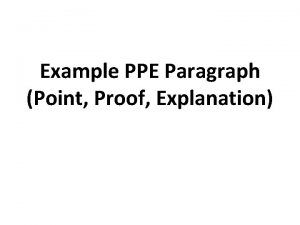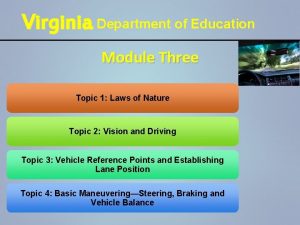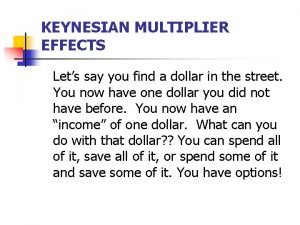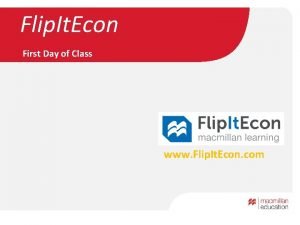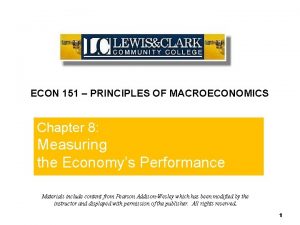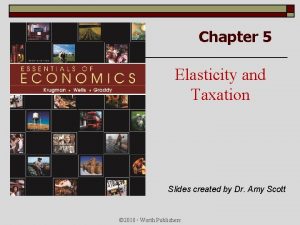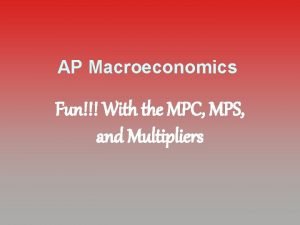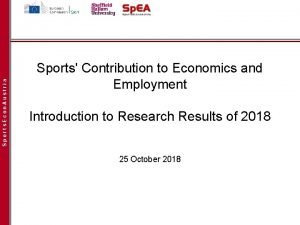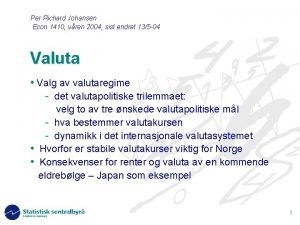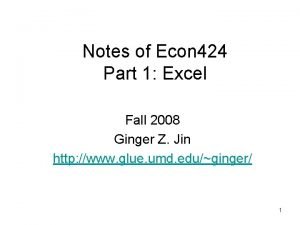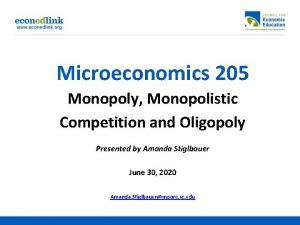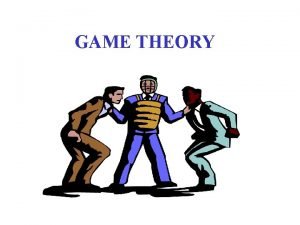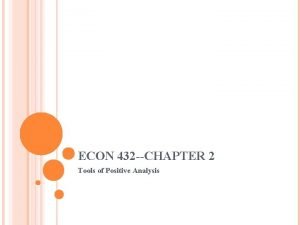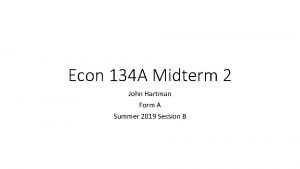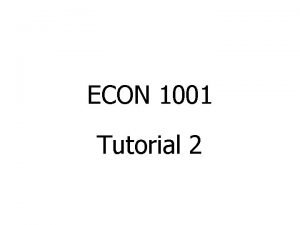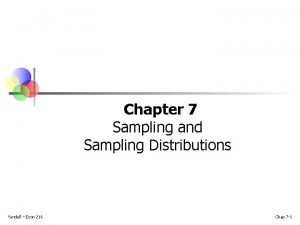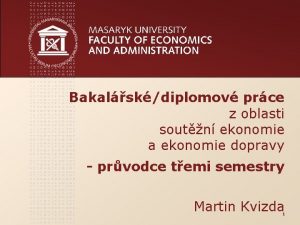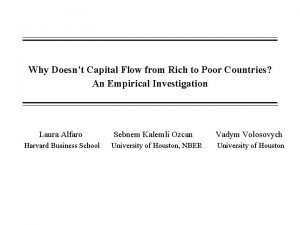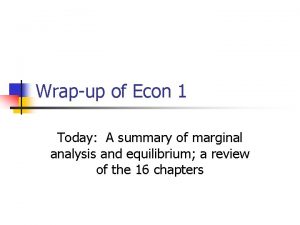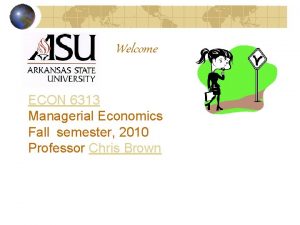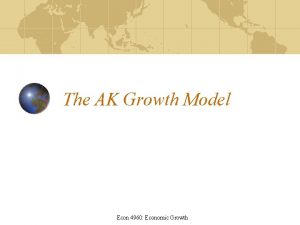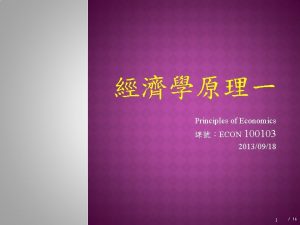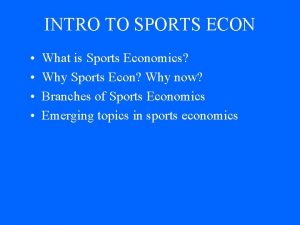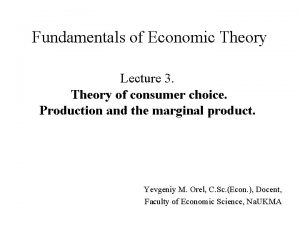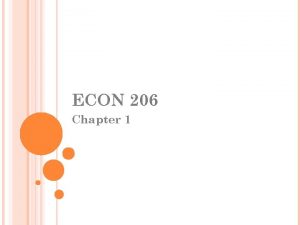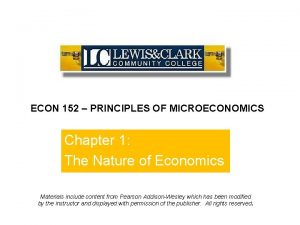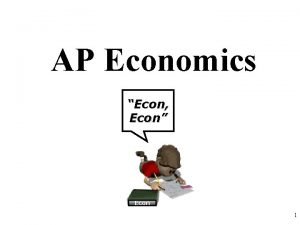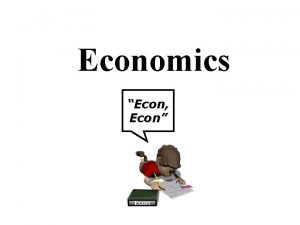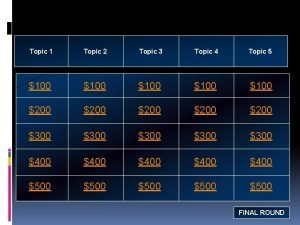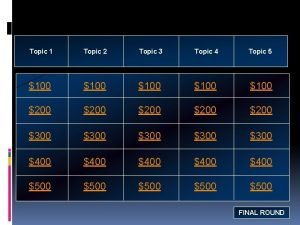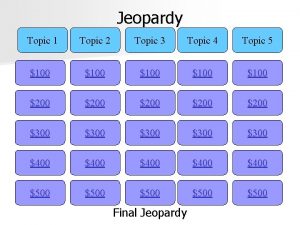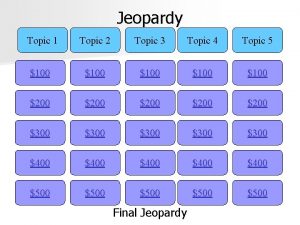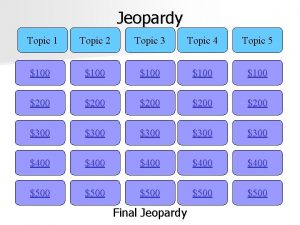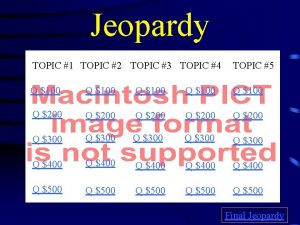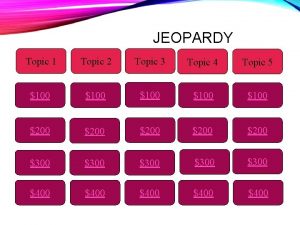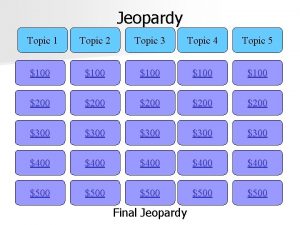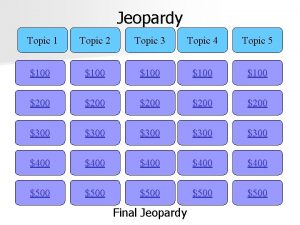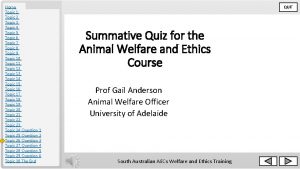ECON 7200 Topic 1 Introduction The Nature and





































- Slides: 37

ECON 7200 Topic 1 Introduction: The Nature and Method of Economics 2012 Copyright 2004 Mc. Graw-Hill Australia Pty Ltd PPTs t/a Microeconomics 7/e by Jackson and Mc. Iver Slides prepared by Muni Perumal, University of Canberra, Australia. 1

A framework for the course • When id re-developed this course I used SWOT analysis as my framework, it is old fashioned, but it helps us to focus our thinking about how to maximise profits. • Strengths & Weaknesses, factors operating internal to the firm, ie microeconomics. • Opportunities and threats, emanate from the firms external environment ie macroeconomics Copyright 2004 Mc. Graw-Hill Australia Pty Ltd PPTs t/a Microeconomics 7/e by Jackson and Mc. Iver Slides prepared by Muni Perumal, University of Canberra, Australia. 2

Microeconomics and Macroeconomics • Microeconomics is concerned with specific economic units and a detailed consideration of the behaviour of these individuals units, a better understanding of the firm’s internal environment can help us to strengthen the firms existing strengths and turn weaknesses into strengths in order to develop competitive advantages. Copyright 2004 Mc. Graw-Hill Australia Pty Ltd PPTs t/a Microeconomics 7/e by Jackson and Mc. Iver Slides prepared by Muni Perumal, University of Canberra, Australia. 3

Microeconomics and Macroeconomics • Macroeconomics deals with the economy as a whole, or with the basic subdivisions or aggregates that make up the economy, a better understanding of the firm’s external environment can help us better identify and make better use of opportunities and turn threats into opportunities into order to develop competitive advantages. Copyright 2004 Mc. Graw-Hill Australia Pty Ltd PPTs t/a Microeconomics 7/e by Jackson and Mc. Iver Slides prepared by Muni Perumal, University of Canberra, Australia. 4

The Economic Perspective • Two key differences to other social sciences. • Marginal analysis. • Opportunity costs. Copyright 2004 Mc. Graw-Hill Australia Pty Ltd PPTs t/a Microeconomics 7/e by Jackson and Mc. Iver Slides prepared by Muni Perumal, University of Canberra, Australia. 5

The Economic Perspective • Marginal analysis: MB=MC – Cost benefit analysis is a central tool of many decision makers – incremental benefits available from any changes are compared to the incremental costs of making the change – Differs from say accounting whose focus in on average and total analysis – We will discuss this in depth throughout the Copyright 2004 Mc. Graw-Hill Australia Pty Ltd rest of the. PPTs course. t/a Microeconomics 7/e by Jackson and Mc. Iver Slides prepared by Muni Perumal, University of Canberra, Australia. 6

The Foundation of Economics The economising problem is underpinned by two fundamental facts: 1. Unlimited or insatiable wants of society for goods and services that give utility Utility is the economist’s term for pleasure or satisfaction 2. Economic resources are limited or scarce 3. Scarcity means that we have to make choices to maximise satisfaction. Copyright 2004 Mc. Graw-Hill Australia Pty Ltd PPTs t/a Microeconomics 7/e by Jackson and Mc. Iver Slides prepared by Muni Perumal, University of Canberra, Australia. 7

Choices • Scarcity means that both economies and firms have to make choices. • What to produce, what is in highest demand • How to produce, the least cost method • For whom, people who are willing and able to pay the price Copyright 2004 Mc. Graw-Hill Australia Pty Ltd PPTs t/a Microeconomics 7/e by Jackson and Mc. Iver Slides prepared by Muni Perumal, University of Canberra, Australia. 8

Goals • The aim of firms is to maximise profits (or minimise losses). • Profit = Total revenue – Total costs (max) (maximise) (minimise) • Different firms have different strategies to maximise profits Copyright 2004 Mc. Graw-Hill Australia Pty Ltd PPTs t/a Microeconomics 7/e by Jackson and Mc. Iver Slides prepared by Muni Perumal, University of Canberra, Australia. 9

Different choices • Qantas. • Use Strategic or Hard HRM, they try to maximise profits by reducing TC. • Labour is seen as a variable cost that needs to be minimised, like all other VC. • Competitive advantage is derived from low labour. Copyright 2004 Mc. Graw-Hill Australia Pty Ltd PPTs t/a Microeconomics 7/e by Jackson and Mc. Iver Slides prepared by Muni Perumal, University of Canberra, Australia. 10

Different choices • Virgin • Use soft or developmental HRM to maximise profits by maximising TR. • Labour is seen as the source of competitive advantage. • Labour needs to be developed as workers are the source of new products and processes and solutions. Copyright 2004 Mc. Graw-Hill Australia Pty Ltd PPTs t/a Microeconomics 7/e by Jackson and Mc. Iver Slides prepared by Muni Perumal, University of Canberra, Australia. 11

Economic Resources Two broad categories: • Property resources Land – Capital – • Human resources – Labour – Entrepreneurial ability Copyright 2004 Mc. Graw-Hill Australia Pty Ltd PPTs t/a Microeconomics 7/e by Jackson and Mc. Iver Slides prepared by Muni Perumal, University of Canberra, Australia. 12

Land • Broader than commonly understood • An economic resource which includes all the natural resources that go into the production of goods and services • Income received by land is rent Copyright 2004 Mc. Graw-Hill Australia Pty Ltd PPTs t/a Microeconomics 7/e by Jackson and Mc. Iver Slides prepared by Muni Perumal, University of Canberra, Australia. 13

Capital • All the manufactured aids to production used to produce goods and services and distribute them to the final consumer without directly satisfying human wants • The process of producing and accumulating these capital goods is known as investment • Payment for capital is interest Copyright 2004 Mc. Graw-Hill Australia Pty Ltd PPTs t/a Microeconomics 7/e by Jackson and Mc. Iver Slides prepared by Muni Perumal, University of Canberra, Australia. 14

Labour • Broader than commonly used • All human physical and mental talents (excluding entrepreneurial talent) that can be used in producing goods and services • Income accruing to labour is wage Copyright 2004 Mc. Graw-Hill Australia Pty Ltd PPTs t/a Microeconomics 7/e by Jackson and Mc. Iver Slides prepared by Muni Perumal, University of Canberra, Australia. 15

Entrepreneurial Ability • A specialised form of human resource • Involves the combining of the other resources to produce a product, make non-routine decisions, innovate, and bear risk • Profit is the reward for entrepreneurship Copyright 2004 Mc. Graw-Hill Australia Pty Ltd PPTs t/a Microeconomics 7/e by Jackson and Mc. Iver Slides prepared by Muni Perumal, University of Canberra, Australia. 16

Economics and Efficiency • Efficiency is the use or administering of scarce resources to produce the maximum amount of the desired goods and services, thereby achieving the greatest possible fulfilment of society’s wants. • The maximum amount of production occurs when two conditions are satisfied. Copyright 2004 Mc. Graw-Hill Australia Pty Ltd PPTs t/a Microeconomics 7/e by Jackson and Mc. Iver Slides prepared by Muni Perumal, University of Canberra, Australia. 17

Economics and Efficiency • Full employment: When all available factors of production are employed • Full production: When factors of production are used efficiently; there are two kinds of efficiency < Allocative efficiency < Productive efficiency Copyright 2004 Mc. Graw-Hill Australia Pty Ltd PPTs t/a Microeconomics 7/e by Jackson and Mc. Iver Slides prepared by Muni Perumal, University of Canberra, Australia. 18

Economics and Efficiency • Allocative efficiency – Occurs when all available resources are devoted to the combination of goods most wanted by society, i. e. resources are directed to their most productive use, the guiding function of prices. • Productive efficiency – Occurs when goods or services are produced using the least cost method of production. Copyright 2004 Mc. Graw-Hill Australia Pty Ltd PPTs t/a Microeconomics 7/e by Jackson and Mc. Iver Slides prepared by Muni Perumal, University of Canberra, Australia. 19

Opportunity costs • There are two reasons why I want to discuss opportunity costs today. • The Production Possibility Frontier is a good illustration of opportunity coasts, the law of increasing opportunity cost and the law of constant opportunity costs, as well as how economists build and use models. • The gains from trade. Copyright 2004 Mc. Graw-Hill Australia Pty Ltd PPTs t/a Microeconomics 7/e by Jackson and Mc. Iver Slides prepared by Muni Perumal, University of Canberra, Australia. 20

The Production Possibilities Curve or Frntier • The Production Possibilities Curve (PPC) or Production Possibilities Frontier (PPF) can be used to illustrate the concept of choice and opportunity cost • Demonstrates that society must make choices about which goods and services to produce and which to go without Copyright 2004 Mc. Graw-Hill Australia Pty Ltd PPTs t/a Microeconomics 7/e by Jackson and Mc. Iver Slides prepared by Muni Perumal, University of Canberra, Australia. 21

Production Possibilities Curve Assumptions • Efficiency: Full employment and productive efficiency • Fixed resources • Fixed technology • Two products only: capital good and consumer good Copyright 2004 Mc. Graw-Hill Australia Pty Ltd PPTs t/a Microeconomics 7/e by Jackson and Mc. Iver Slides prepared by Muni Perumal, University of Canberra, Australia. 22

Production Possibilities Curve • Points on the PPC represent a maximum output of the two products • Points inside the PPC are attainable, but are inefficient and undesirable • Points outside the curve are superior but unobtainable given the assumptions of fixed technology and resources Copyright 2004 Mc. Graw-Hill Australia Pty Ltd PPTs t/a Microeconomics 7/e by Jackson and Mc. Iver Slides prepared by Muni Perumal, University of Canberra, Australia. 23

Production possibilities of consumer goods and capital goods with full employment __________________________ Type of product Consumer (‘ 00000) Capital (‘ 00000) Production alternatives A B C D E 0 1 2 3 4 10 9 7 4 0 __________________________ Copyright 2004 Mc. Graw-Hill Australia Pty Ltd PPTs t/a Microeconomics 7/e by Jackson and Mc. Iver Slides prepared by Muni Perumal, University of Canberra, Australia. 24

Production Possibilities Frontier a Consumer goods 15 Figure 2. 1 b Unattainable c 10 d Attainable 5 z e f 0 1 2 3 4 5 Capital goods)

Production Possibilities Curve (cont. ) • Opportunity cost: – The amount of other products that must be sacrificed to obtain an additional unit of a good • The PPC is usually bowed out from the origin because of the law of increasing opportunity costs: – more and more of a good must be given up to obtain additional units of the other good Copyright 2004 Mc. Graw-Hill Australia Pty Ltd PPTs t/a Microeconomics 7/e by Jackson and Mc. Iver Slides prepared by Muni Perumal, University of Canberra, Australia. 26

Law of constant opportunity costs • If the factors of production are perfectly interchangeable between two goods then the opportunity costs will be constant and hence the PPF will be a straight line. • The same amount of factors are transferred from the production of one good to produce the same extra amount 27 of another good

Constant opportunity cost a Consumer goods) 15 Constant opportunity cost of capital goods b c 10 d 5 e f 0 1 2 3 4 5 Capital goods)

Constant opportunity cost • Some examples. • Often the two products are substitutes, e. g. Holden Commodore sedans and station wagons, i. e. made in the same factory by the same people. • More often the goods are not substitutes, e. g. men’s and women’s Tee-shirts, or wheat and barley. • The focus is factors of production. 29

Law of increasing opportunity cost • The PPC is usually bowed out from the origin because of the law of increasing opportunity costs: more and more of a good must be given up to obtain additional units of the other good – because the factors used to produce one good (e. g. consumer goods) are not perfectly suited to producing the other good (e. g. capital equipment) Copyright 2004 Mc. Graw-Hill Australia Pty Ltd – PPTs t/a Microeconomics 7/e by Jackson and Mc. Iver Slides prepared by Muni Perumal, University of Canberra, Australia. 30

PPF and Opportunity Cost a Consumer goods) 15 b Increasing opportunity cost of capital goods c 10 d e 5 f 0 1 2 3 4 5 Capital goods) Figure 2. 2 (a)

Economic Growth and the PPC • Economic growth can be represented as an outward shift (to the right) of the PPC • Economic growth results from: More factors of production – Better quality factors of production – Technological advances, embedded in capital – Do these improvements increase the production of just one good or both goods? – Copyright 2004 Mc. Graw-Hill Australia Pty Ltd PPTs t/a Microeconomics 7/e by Jackson and Mc. Iver Slides prepared by Muni Perumal, University of Canberra, Australia. 32

Economic Growth and the PPF • The PPF pivots; i. e. the blue line, the change is beneficial to the production of one good, but not both goods , e. g. a specific purpose technology • The PPF shift; i. e. the red line, the change is beneficial to the production of both goods, e. g. a general purpose technology. Copyright 2004 Mc. Graw-Hill Australia Pty Ltd PPTs t/a Microeconomics 7/e by Jackson and Mc. Iver Slides prepared by Muni Perumal, University of Canberra, Australia. 33

Consumer goods(thousands) Economic Growth and PPC 14 13 12 11 10 9 8 7 6 5 4 3 2 1 QA′ B′ C′ D′ E′ 1 2 3 4 5 6 7 Q 8 Capital goods (hundred thousands) Copyright 2004 Mc. Graw-Hill Australia Pty Ltd PPTs t/a Microeconomics 7/e by Jackson and Mc. Iver Slides prepared by Muni Perumal, University of Canberra, Australia. 34

Gains from trade • Comparative advantage and absolute advantage – A person has a comparative advantage in an activity if they/it can perform an activity at a lower opportunity cost than anyone else. – An absolute advantage exists when a person or nation can produce more of a good than another.

The Gains from Trade Figure 2. 7 Perhaps we can show the gains from trade better using the PPF/PPC model.

Production Possibilities Frontier and trade a Consumer goods 15 Figure 2. 1 b c 10 d 5 e z f 0 1 2 3 4 5 Capital goods)
 7200/240
7200/240 Clincher in writing
Clincher in writing /topic/ down
/topic/ down Nature and nature's laws lay hid in night meaning
Nature and nature's laws lay hid in night meaning Drivers ed module 3 topic 1
Drivers ed module 3 topic 1 Point proof
Point proof Conflict in to kill a mockingbird
Conflict in to kill a mockingbird Topic sentence about nature
Topic sentence about nature Explanation of paragraph
Explanation of paragraph Module 3 topic 1 laws of nature
Module 3 topic 1 laws of nature Determinace lidské psychiky
Determinace lidské psychiky How to find tax multiplier
How to find tax multiplier Fiscal policy ib economics
Fiscal policy ib economics Flip it econ
Flip it econ Econ 151
Econ 151 Midpoint method formula
Midpoint method formula Mpc and gdp
Mpc and gdp Marginal analysis in economics
Marginal analysis in economics Sports econ austria
Sports econ austria Econ 1410
Econ 1410 Econ 424
Econ 424 Mr darp econ
Mr darp econ What is game theory
What is game theory What is a positive analysis
What is a positive analysis Econ 134
Econ 134 Econ
Econ Econ chapter 7
Econ chapter 7 Econ muni harmonogram
Econ muni harmonogram Gertler econ
Gertler econ Why printing money causes inflation
Why printing money causes inflation Econ
Econ Econ
Econ The ak model
The ak model Nthu econ
Nthu econ Sports economics definition
Sports economics definition Economic theory
Economic theory Econ 206
Econ 206 Econ 152
Econ 152




